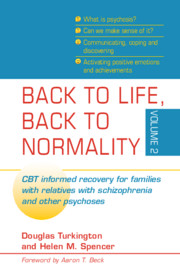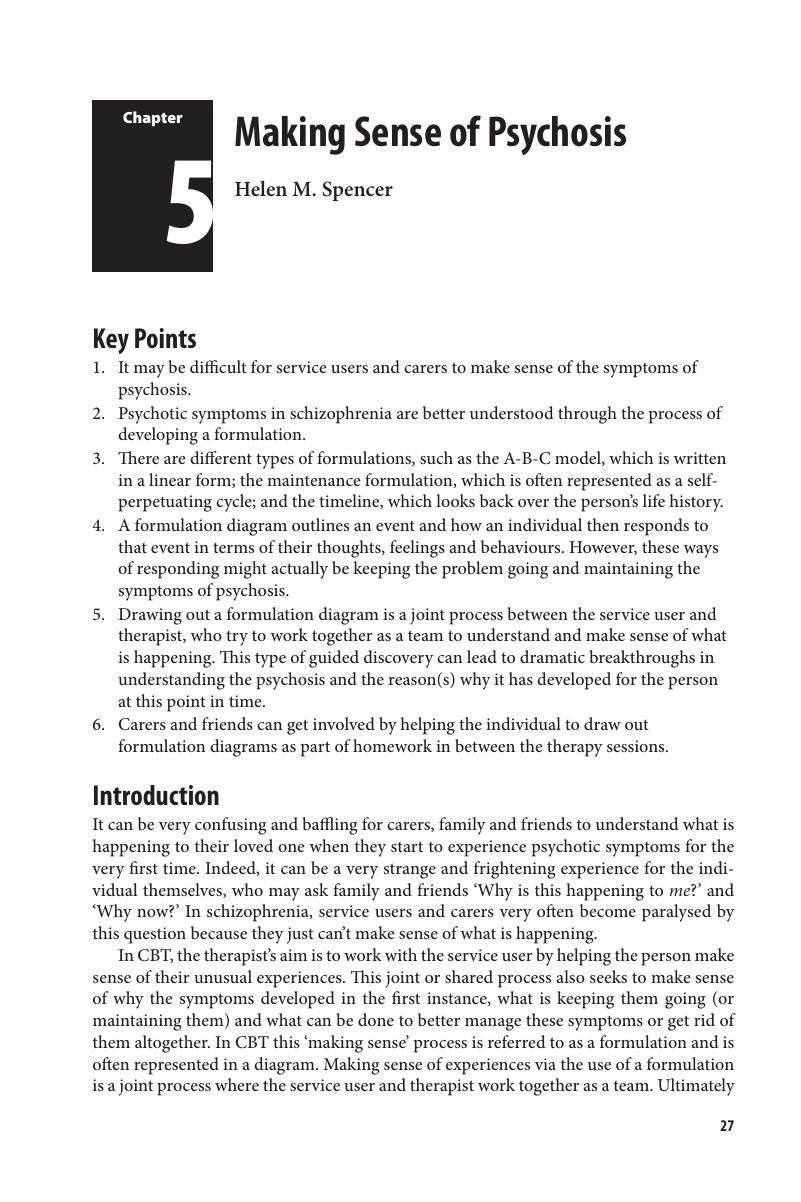 Back to Life, Back to Normality
Back to Life, Back to Normality Book contents
- Back to Life, Back to Normality Volume 2
- Back to Life, Back to Normality Volume 2
- Copyright page
- Contents
- Endorsements
- Testimonials
- Contributors
- Foreword
- Preface
- Chapter 1 What Is Psychosis? What Is Schizophrenia?
- Chapter 2 Psychosis Usually Has a Natural Tendency towards Recovery
- Chapter 3 Positive Aspects of Psychosis
- Chapter 4 When Can Psychosis Escalate and Will Medicines Help?
- Chapter 5 Making Sense of Psychosis
- Chapter 6 What If the Psychosis Is Linked to Trauma?
- Chapter 7 The Five Pillars of Caring for Psychosis
- Chapter 8 Effective Coping
- Chapter 9 Caring about Delusions and Unusual Beliefs
- Chapter 10 My Story of Psychosis and CBT
- Chapter 11 Dealing with Visions
- Chapter 12 Compassion-Focused Approaches for Clients, Families and Health Care Providers
- Chapter 13 Improving Self-Care, Attention/Memory, Motivation and Social Functioning
- Chapter 14 Where Can We Learn More?
- Index
- References
Chapter 5 - Making Sense of Psychosis
Published online by Cambridge University Press: 16 November 2018
- Back to Life, Back to Normality Volume 2
- Back to Life, Back to Normality Volume 2
- Copyright page
- Contents
- Endorsements
- Testimonials
- Contributors
- Foreword
- Preface
- Chapter 1 What Is Psychosis? What Is Schizophrenia?
- Chapter 2 Psychosis Usually Has a Natural Tendency towards Recovery
- Chapter 3 Positive Aspects of Psychosis
- Chapter 4 When Can Psychosis Escalate and Will Medicines Help?
- Chapter 5 Making Sense of Psychosis
- Chapter 6 What If the Psychosis Is Linked to Trauma?
- Chapter 7 The Five Pillars of Caring for Psychosis
- Chapter 8 Effective Coping
- Chapter 9 Caring about Delusions and Unusual Beliefs
- Chapter 10 My Story of Psychosis and CBT
- Chapter 11 Dealing with Visions
- Chapter 12 Compassion-Focused Approaches for Clients, Families and Health Care Providers
- Chapter 13 Improving Self-Care, Attention/Memory, Motivation and Social Functioning
- Chapter 14 Where Can We Learn More?
- Index
- References
Summary

- Type
- Chapter
- Information
- Back to Life, Back to NormalityCBT Informed Recovery for Families with Relatives with Schizophrenia and Other Psychoses, pp. 27 - 32Publisher: Cambridge University PressPrint publication year: 2018


